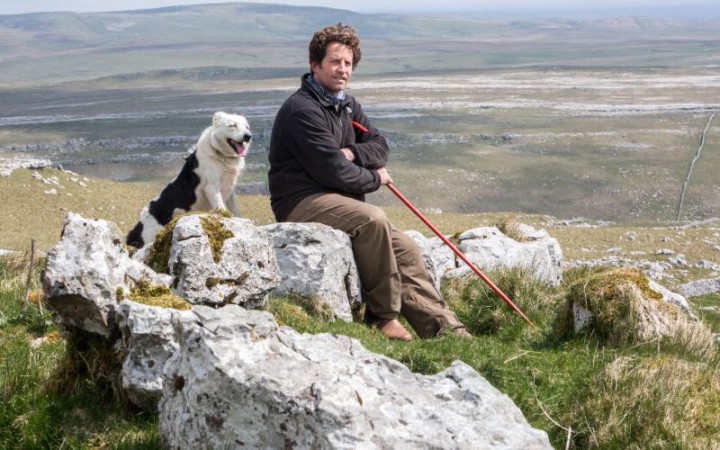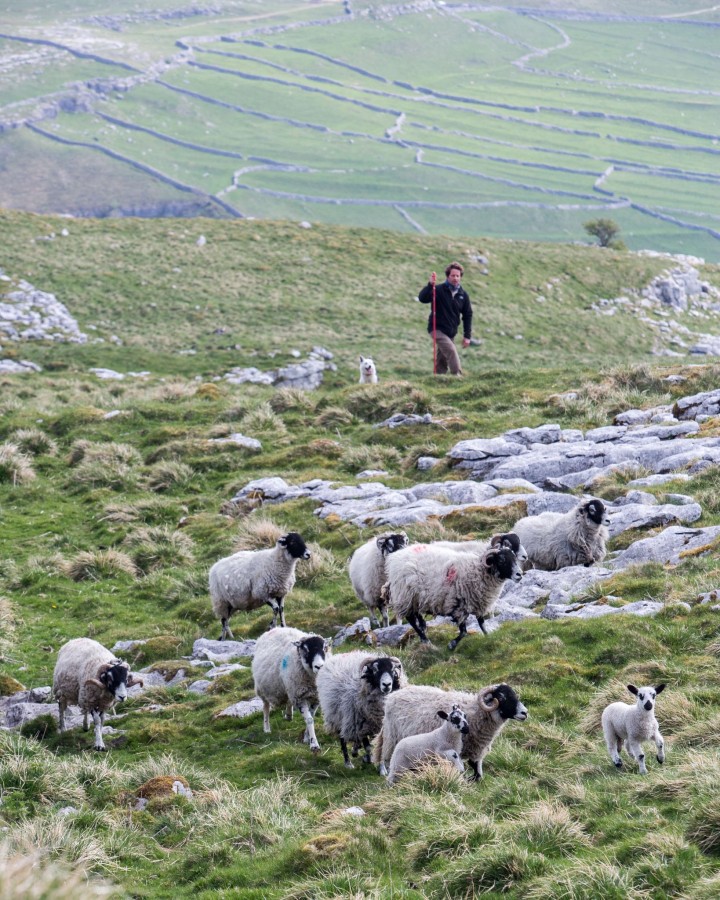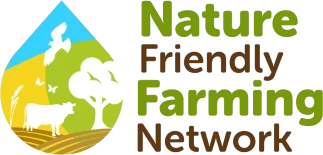In the heart of the Yorkshire Dales National Park, Neil Heseltine has put nature at the front and centre of his farm business. Now Hill Top Farm is forging a new path for life in the uplands.

Neil Heseltine - A future for the uplands

Our farming system has re-established its relationship with nature, and our livestock are central to that.
The rolling hills of the Yorkshire Dales are a cherished national landmark. But farming here can be unforgiving with harsh weather and low fertility soil compounded by volatile market prices and rising input costs.
Hill Top Farm, a mix of owned and tenanted land, has been in the Heseltine family for generations, now farmed by son Neil and his partner, Leigh. At 800ft to 1800ft above sea level, the farm’s 1200 acres sit on the Mid Craven Fault, creating a 50/50 split between limestone and millstone grit with rush pasture, heather moorland and species-rich hay meadows.
Twenty years ago, the farm was much like many upland farms: dependent on the Basic Payment Scheme and striving for increased output in the hopes of better returns. But over time, Hill Top Farm’s ethos shifted to more traditional methods after entering a cattle grazing scheme called the Limestone Country Project in 2004.
“When we got involved in the project, we thought we were just doing it for biodiversity, but then we realised two things,” explains Neil. “One, that we can graze the land in a way which is positive for biodiversity, and two, that some grazing systems, particularly how we were grazing sheep through heavy stocking, was detrimental to biodiversity. We didn't quite know it then, but when we look back, we realise that project completely changed our farm philosophy. Our farming system has re-established its relationship with nature, and our livestock are central to that. More than anything, our approach is about achieving environmental and financial sustainability."

Neil took on 20 Belted Galloways to help restore the farm’s limestone pasture and increase floral diversity, switching from sheep to mixed cattle grazing. Introducing slow-maturing native breeds reshaped Neil’s view of how livestock grazing can work symbiotically with the natural environment.
“We have changed the environment dramatically in a positive way,” says Neil. “Botanically, it’s very different. Many plants have returned, which we never used to see, including rock rose, bird's eye primrose, scabious, wild thyme, spearmint and bluebells. I used to see a hare about once a year, now I see a hare once every three days.”
Rotating his livestock between pastures at the right times of the year allows the sward to flower and flowering species to set seed and germinate. Every plant in bloom attracts abundant insect life, supporting birdlife and bringing wider ecosystem benefits above and below the soil.

"We noticed the negative effects of different management on other parts of the farm. We had fields full of flowers, and if we turned out the sheep at the wrong time, then all the flowers were gone a week later. This led me to think about every decision I made, ultimately to bring balance between nature’s processes and our farming system.”
Neil began to adjust his stocking ratios, and densities, knowing too much or too little grazing can quickly diminish the value of their grasslands. By 2016, the sheep had reduced from 800 to 200, and the cattle had expanded to 120. Now they have a 65-strong calving herd of belted Galloways with a maximum of 180 at any one time, plus 80 Swaledale and Wensleydale sheep raised year-round on pasture.
With a diverse range of grassland habitats on the farm, Neil focuses his grazing management on two goals: improved biodiversity and sufficient forage. He tailors his stocking rates and grazing duration with these aims in mind, trialling different strategies and relying on intuition and experimentation rather than following a strict management plan.
This change in the farming system meant grazing pressure reduced, biodiversity increased, and grass growth improved, eliminating imported or additional feed costs. No starker were these changes than in comparisons on the balance sheet.
“The farm is now profitable when at one time it wasn’t,” says Neil. “The best years of the sheep business were just about breaking even, and the cattle enterprise was teaching us lessons we needed to learn. We realised the cattle enterprise was doing a brilliant job for biodiversity and more responsible around climate change, but also miles more cost-effective. We had a multiple-win situation in our hands.”
The farm is now profitable when at one time it wasn’t.
The herd’s higher profit margins and low overhead costs were financially more viable than the hefty price of vet bills and winter feedstocks for the 800 flock. In the years since, Neil has learned through practice that less often means better, and moving to a lower-impact model was paying dividends for their business and the environment.
“We applied what we learned from the cattle to the sheep, and we’re still learning about the process. We find the sheep harder to manage in this way, but we’re always getting nearer. Weed control is better, and the farm doesn’t need chemicals. We control weeds with a scythe, which takes longer, but we are far more comfortable with it. When we do it right, it’s more effective.”
“We've shifted our profit from a reliance on subsidies of about 80% down to a reliance of about 40%. The difference between profit and income is quite important. People talk about the income they receive from sheep and cows, but it's more than that. Income isn't profit, and in many instances, there's a lot of income, but there are more costs associated, so actually, the farm could be in a loss-making position.”
The farm’s change in strategy has led to impressive wildlife gains with increased numbers of threatened species, such as Skylark, Redshank, Curlew, Barn Owl and Brown Hares. Lower impact grazing practices provide sufficient grass throughout winter without making hay in silo, saving time and money.

Neil works closely with advisors from the National Trust and the National Park Authority, who provide management advice which, he says, is instrumental in helping monitor changes and understand the outcomes. “I knew nothing about ecology 15 years ago, and it was really valuable having access to advice to help us on our way and let us know when things were going right, which kept us going in this direction.”
Changes to upland farming have raised questions about the impacts on food security. But Neil’s farming system presents a move towards a different paradigm where food, farming and nature can thrive in balance. The farm’s output weight has increased by 40% since 2012, challenging the argument that reduced headage means less food production. “Although we're not producing as much sheep, we're outperforming in terms of the actual output weight,” he says.
With farm payments rapidly changing in England, bringing implications for farms in these landscapes, Neil is optimistic. “I’m really positive about the future of the uplands. If we’re willing to do something different, there could be a positive future combining economic and environmental sustainability. We need support to do it, but we must also take the future into our own hands and grasp the opportunities available.”
